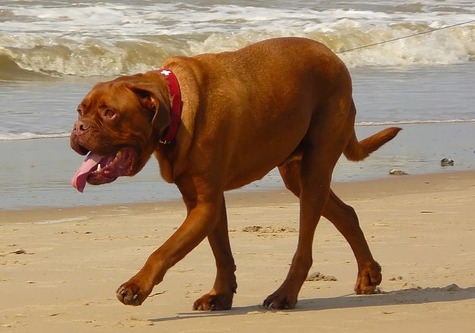Heat Injuries & Heat Strokes

Heat injuries encompass heat stress, heat exhaustion, and heat stroke. They are one of the most common preventable emergencies we see in the summer, can become life-threatening before you recognize a problem, and can kill even young, athletic dogs. This article lays out how to recognize a problem and basic first aid you can provide in route to the vet’s office. If you suspect a heat injury, you should ALWAYS seek medical attention – even if they seem to be “getting better” deadly problems may be happening inside your pet.
How Do I Prevent A Heat Injury?
- Respect the temperature. If your dog spends most of his time in the air conditioning, it doesn’t have to be that hot out for them to overheat.
- Understand your dog’s conditioning. If your dog only exercises a few minutes a day (or week), they can overheat fast even with light exercise like walking.
- Spray them down. If you can’t avoid time outside on a hot day, wetting them down will help keep them cool as the water evaporates.
- Restrict exercise during the hot parts of the day.
- Provide cool water and shade whenever your dog is outside.
What Are The Risk Factors?
Heat injuries are a product of temperature, stress, and time. Any animal can suffer a heat injury given the right quantity of those three things. I have seen many young, athletic animals suffer serious heat injuries because they pushed themselves too hard for too long. It also doesn’t have to be that hot – if it’s always 68 degrees on the couch, and we go running in 80 degree humid weather long enough it might just be too much. However, there are several factors that can increase a pet’s risk:
- Acclimation: It takes about 2 weeks of regular exposure to high (or low) temperatures to acclimate. Remember that even if it’s been 95 degrees out for the last month, if Muffy spends 99% of her time lounging in your air conditioned house, she’s still at high risk.
- Breed: Short-faced dogs like Pugs, Bulldogs, Shih Tzus move air poorly (hence all that snoring), which puts them at risk because panting is a dog’s #1 way of cooling off. Thick-coated dogs are also at high risk due to all that insulation.
- Obesity: Speaking of insulation…And, aside from the obvious, obesity also reduces respiratory function. As above, this makes it harder for them to cool off.
- Prior Heat Injury: It is well-documented both in dogs and humans that having one heat injury makes having episodes in the future even more likely.
How Do You Recognize A Heat Injury?
Heat injuries progress from mild heat stress through life-threatening heat stroke. It is vital that you recognize the early warning signs, which are often subtle. If you’re walking on a hot day and your pet suddenly seems tired or resists going further you should listen to them. Conversely, many active dogs are so eager to please that they’ll push themselves far past the limits of their heat tolerance.
Constant panting is a big red flag, since that is your dog’s main method of cooling down. If you distract them with food or attention and they seem to have a hard time stopping – or can’t stop – that is a serious sign to get them somewhere cool.
The goal should always be to recognize heat stress before it turns into serious exhaustion or heat stroke. Severely affected pets may exhibit vomiting, diarrhea, collapse, seizures, spontaneous bruising or bleeding and more.
What Should I Do If I Suspect A Heat Injury?
- Get your pet out of the heat, ideally into an air conditioned environment.
- Check your pet’s temperature, ideally with a rectal thermometer.
- Wet paws and ears with cool (NOT COLD) water. You can also place cool, damp towels in your pets armpits
- DO NOT apply ice or cold water. This will cause blood vessels in the skin to constrict, and actually make it MORE difficult for your dog to get rid of excess heat.
- Seek veterinary care! I cannot over-emphasize how serious heat injuries can become, and how quickly. The damage to your pet does not stop the moment they are taken out of the heat, either. Please don’t take a “wait and see” approach. Wouldn’t you rather your vet tell you it wasn’t that big of a deal than show up hours later when it might be too late?
What Will The Veterinarian Do?
First and foremost, we’ll assess your pet to decide on the necessary course of action. Generally, we’ll want to place an IV catheter so we can provide fluids – this not only helps cool the animal internally, but combats some of the most serious side effects of a heat injury like dehydration and shock. We’ll also recommend bloodwork to assess the damage that may have been done to internal organs. That damage can result in almost any health problem you can think of, and your vet will do their best to catch problems as they develop and address them individually.
Heat injuries can be deadly, and can happen to ANY dog, even if the temperature is not that extreme. Always think about the temperature and your dog’s condition before a long walk on a hot day, and err on the side of caution.
